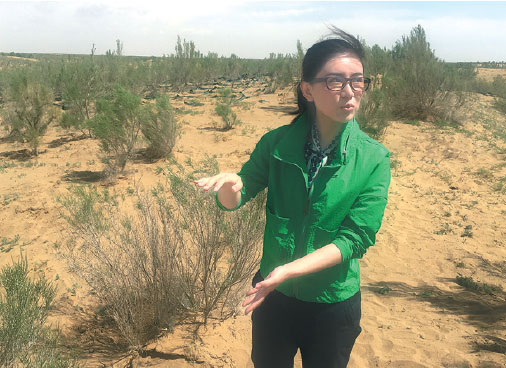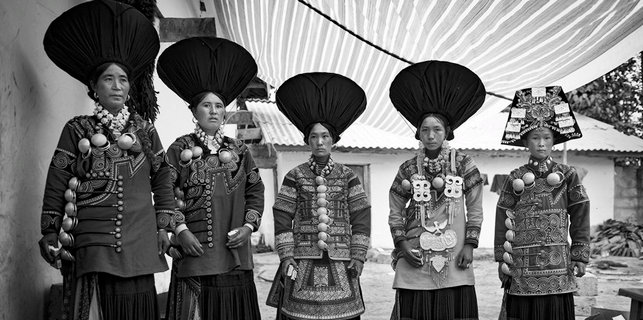Warriors of the sand dunes
 |
|
Cai Chengcheng, deputy head of Minqin county, explains the characteristics of sacsaoul, a plant that can keep sand in place. [Photo provided to China Daily] |
In 2004 locals mobilized to rescue the well by adding water to it. The water level is now stable after having risen from between 0.1m and 0.5m to about 0.7m to 1m in the past 13 years.
"However, it will be extremely hard to get it back to its original natural state," says Zhang Mingquan, a professor of environmental sciences at Lanzhou University.
Another threat to the spring is the surrounding sand. Without proper desertification control, the spring would probably be buried, says Qu Jianjun, researcher at the Cold and Arid Regions Environmental and Engineering Research Institute, part of the Chinese Academy of Sciences. The main measure is to fell tall poplar trees and demolish buildings to create a wind tunnel for northeasterly winds, he says.
Dunhuang was the last stop on a five-day journey that started in the provincial capital, Lanzhou, 1,100 kilometers to the southeast, where the achievements of the Three-North Forest Shelter Belt Development Program and the great combat against desertification in China for nearly 40 years are on display.
In November 1978, China started planning huge shelter belts in the country's north to mitigate drought, sandstorms and soil erosion. The program covers 42 percent of China's land area.
It is not as though China is alone in its fight. Worldwide, creeping deserts pose a threat, and according to the United Nations, 6.6 percent of the land on Earth is covered with deserts, and 34.6 percent is drylands. 2.1 billion people worldwide live in deserts and drylands. 110 countries are facing the problem of land degrading.
Every year, 12 million hectares of land are lost, an area the size of Benin.
In China, although the combat against desertification is helping gradually reduce the area covered by sand, there was still 2.6 million square kilometers of such land at the end of 2014, about 27 percent of the whole territory.
There was also 1.7 million sq km of sandified land, about 18 percent of the national territory, the State Forestry Administration says.






















